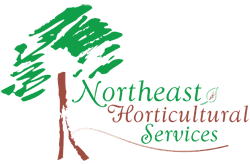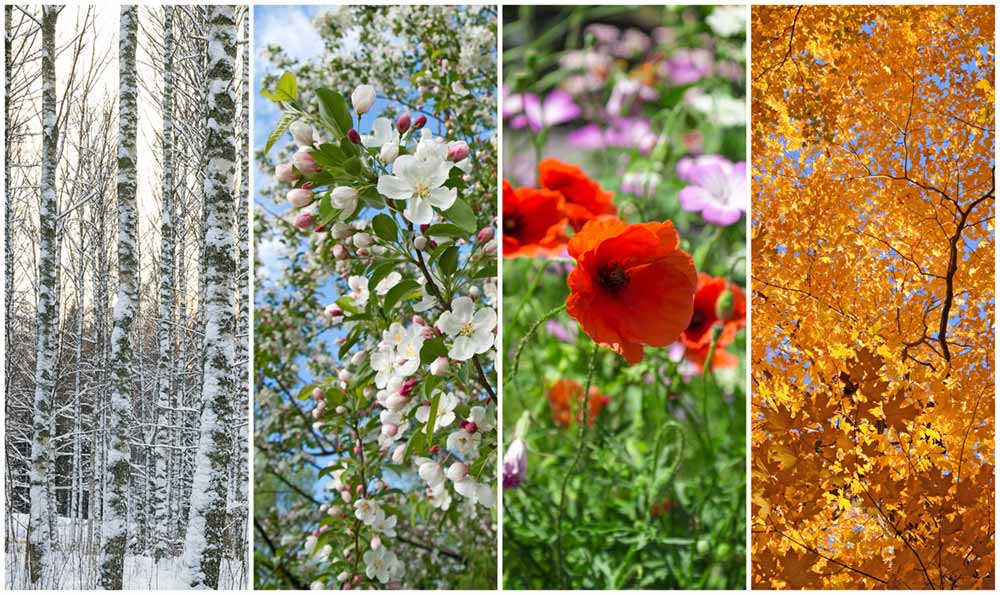The 4 Elements of Seasonal Design
One of the best things about living in the Northeast is the fact that we have four distinct seasons. We get to watch as things change from spring blooms, to summer greens to the amazing foliage color of the fall and the snowy beauty of winter. As a creator of landscapes, it is important to consider these seasons and the effect they have on the overall design of the landscape. If the design considers one season more than another, you end up with an unbalanced aesthetic that will look tremendous in one season, then dull in the next.
#1 Timing of Blooms
There are many elements to consider when designing a well balanced landscape. The first is rotation of the bloom times of the different plants. While spring is the season that is most known for its abundance of blooms, plants should be chosen that can offer blooms from February through November. Trees, shrubs, and perennials can offer flowers throughout this entire 10 month period. From the winter blooming Witch Hazel and Helebores of February, to the summer blooming trees Franklinia and Horsechestnut and colorful coneflower to fall blooming anemones, hydrangea and knockout roses it is possible to achieve bountiful blooms for the entire growing season.
#2 Color & Texture
A great variety can be achieved during the spring and summer months if you carefully consider color and texture of foliage. Deciduous plants come in a rainbow of different greens, purples, chartreuse and even red foliage colors. When there isn’t an abundance of blooms, the color of the foliage can give us as much joy as the flower. The texture of the leaf can enhance the look of a plant as well, the leathery leaf of a viburnum, to the glossy leaf of a cherry to the delicate flittering leaf of a gray birch, it is important to consider alternating and creating depth through texture.
#3 Fall Color
The third seasonal design element to consider is fall color. Plants can put on quite the show in the fall and a landscape can be very dramatic if the fall color is considered during plant selection. A plant that doesn’t seem to add much to the landscape in the spring or summer can make a huge impact if it’s best season is fall. Consider for instance the Lace Leaf Japanese maple ‘Viridis’. While it has no spring flower of note and the foliage during the summer is green, the leaf has an amazing light and airy texture that turns an amazing brilliant orange in the fall. Many of our most superior spring blooming trees don’t have much to offer in the way of fall color and if the bloom is all that is considered the fall landscape will fall short.
#4 Winter Elements
The last element to consider is winter. Deciduous trees are bare for 5 months out of the year, but it doesn’t mean the landscape needs to be boring! During these months beautiful bark can add tremendous flair to the landscape. A few deciduous trees that some to mind in this category are Stewartia, Sycamore, River Birch and Paperbark maple. From color to texture they are a site to behold once the leaves are shed. Deciduous plants can also add elements such as berries and brightly colored stems. Winterberry holly has persistent red berries and Hawthorne trees orange berries that add a zing of color in the stark winter landscape. And for colorful twigs one can consider red or yellow twig dogwood or an amazing Coral Bark Maple.
A healthy balance of evergreen to deciduous plants must be used. Once the leaves are gone, having evergreens as key anchor points of the landscape is paramount. If there are too many deciduous plants to evergreens, the landscape will seem barren in the winter, and if there are too many evergreens, the blooms, foliage and fall color won’t stand out in their season as they should.
As a homeowner, let us know what you’d like to achieve and we can design a landscape that embraces all of the beautiful seasons New England has to offer.




